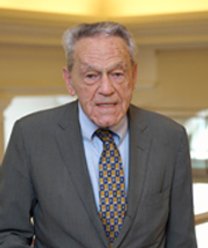Oral history interview with Charles E. Connor
- 2004-Jul-19 – 2004-Jul-20

Charles E. Connor was born and raised in Baltimore, Maryland, spending the first few years of his life in Parkville, but then moving with his family to Towson, a suburb nestled in a wooded area through which Connor used to love to run. He grew up with some relatives who had a science background; religion also played an important role in Connor's upbringing (as well as later in life). Throughout his early education, Connor had an inkling that he wanted to be a scientist, despite a bevy of other talents and interests; with his junior high and high school science classes that feeling solidified. He attended Loyola College in Maryland and, after some time in various labs, chose Vanderbilt University for his master's degree in pharmacology. He attended the University of Maryland to pursue a degree in law, but after finishing law school, he realized that the career was not for him. Connor then entered the neuroscience program at Johns Hopkins University began his work with Kenneth Johnson. In the lab, Connor focused his studies on neural signaling for texture. He stayed at Hopkins for a postdoctoral fellowship with Gian F. Poggi and Michael Steinmetz, and then continued to another postdoc at Washington University in St. Louis with David C. Van Essen. Ultimately, Connor returned to Hopkins for a faculty position in the neuroscience department, where his research has focused on his long-term research goal: an understanding of the neural code for object shape in the brain. The availability of both funding and of students, topics Connor discusses at length, has shaped—and, he believes, will continue to shape—his research. While there is currently no industrial application for his research, he and some of his students have explored possible future applications, including a visual prosthesis and machine vision. His work in the lab, which historically included managing students, designing and overseeing production of new equipment, and benchwork, has evolved with the lab's growing reputation and Connor's added responsibilities, including teaching, writing grants, and administrative tasks. The interview concludes with Connor's reflections on another task that occupies some of his professional time, writing journal articles, and on the effect these publications have on his lab and his science. He talks about the role of creativity, serendipity, and technology in his research, and broader issues such as the national scientific agenda, ethics, and the public's view of science. Finally, the interview ends with his comments on the Pew Scholars Program in the Biomedical Science and his happiness with being a principal investigator.
Access this interview
By request 1 PDF Transcript File and 10 Audio Recording Files
Fill out a brief form to receive immediate access to these files.
If you have any questions about transcripts, recordings, or usage permissions, contact the Center for Oral History at oralhistory@sciencehistory.org.









